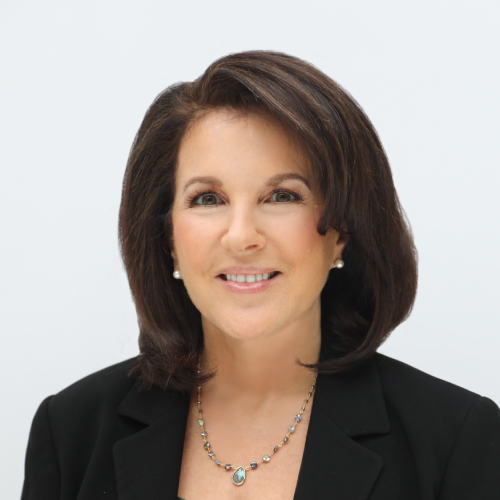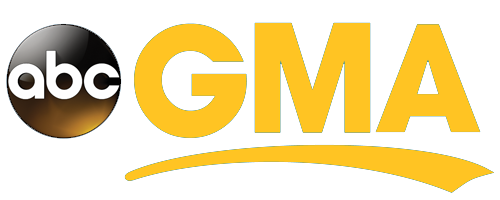Neurologists Tell Their Stories From the Front Lines
Neurocritical care team rounding on confirmed and suspected COVID-19 patients, and on critically ill neurological patients in the Neurological Intensive Care Unit at Jackson Memorial Hospital.
Advice from CDC neuro-virologist and epidemiologist James J. Sejvar, MD
"I have worked with a number of worrisome viral outbreaks over the years, but none have frightened me as much as COVID-19 from the standpoint of spread of the disease, apparent ease of transmission, and associated morbidity and mortality," Dr. Sejvar told Neurology Today.
Lab closures, equipment shortages, and concerns about MS patient care
"My greatest concern is that I will infect my family, friends, and patients. Even now, given the asymptomatic spread of this condition, I see myself as a vector, and a potential threat to everyone.”
A neurologist’s view from the front lines in Spain
“As a healthcare worker you also have to cope with the fact that your chances of getting infected are greater than that of the general population. There are several colleagues whose partners are also physicians and/or have small children, so they have great difficulties balancing work and family life these days.”
From SARS to COVID-19: neurologists offer lessons from the past and advice for the present
Janis Miyasaki, MD, [who remembers what it was like being quarantined during SARS] wrote to some of her faculty colleagues who she knew were isolated with symptoms and found businesses online that were delivering treats that had been prepared for now cancelled trade shows. She bought boxes for friends who were quarantined or those who needed a pick-me-up.
From SARS to COVID-19: a neurologist now on the front lines in France
"Paradoxically, this lesson [from SARS] has been forgotten and these strict measures have not been applied in Europe and in many countries worldwide. We are trying to do our best now, but we have lost too much time and it does not work very well.”
Evidence-based medicine: what neurologists need to remember during the pandemic
"Even the suggestion of effectiveness is enough to get physicians—who should know better—to write prescriptions of hydroxychloroquine for themselves and loved ones—just in case. In fact, this drug can be very toxic, and has shown efficacy only in very high (toxic) doses in basic science studies. More likely than not, it will turn out not to be helpful and even somewhat harmful, as most untested therapies turn out not to be effective—people typically get the side effects and no benefit. “
Neurologists ask. CDC’s James J. Sejvar, MD, answers questions
On March 30, 2020, James J. Sejvar, MD, neurologist and epidemiologist at the Centers for Disease Control and Prevention (CDC), met with the AAN Board of Directors via Zoom to provide an update and answer questions on COVID-19. Following is an excerpted and edited transcript of his responses of their 14 questions.
Not enough N95 masks? This neurology fellow is spearheading development of a new prototype
The COVID-19 crisis, and the dearth in supply of personal protective equipment (PPE), specifically, has spurred a wave of innovation in the medical community, perhaps unlike any other before. From new sterilization and decontamination protocols, to repurposed materials and supplies for masks, shields, gowns, intubation barriers and more, physicians are leading the charge, sharing donor and supplier sources, design and construction patterns, and experience and advice on a variety of forums and social media platforms. It may surprise no one that neurologists are often leading the pack, bringing analytic skills, inventiveness, and creativity to promote the health and safety of those on the front lines. Claire Clelland, PhD, MD, a neurology fellow and researcher at the University of California, San Francisco discussed with Neurology Today what led her to collaborate with a Portland company to mass produce face shields and N95 masks, and how the work is getting done.
New Orleans has one of the highest number of novel coronavirus deaths per capita in the nation, according to The Data Center. It is also where you will find Ochsner Health's Korak Sarkar, MD, who has channeled his focus to address shortages and challenges created by the COVID-19 crisis. Having completed a post-doctoral fellowship in biodesign at Northwestern University, he joined the Ochsner Neurosciences Institute in 2015 and innovation Ochsner (iO) in 2018. Dr. Sarkar is also a staff neurologist at the New Orleans Veteran Affairs Hospital and adjunct professor in the Tulane department of biomedical engineering.
Private practice neurology hit by pay cuts, furloughs, and loss of job benefits
At a time during which neurologists are being deployed to serve on COVID-19 wards and intensive care units without proper personal protective equipment (PPE), and so many of us are worried about the lives of colleagues, family members, and friends, fiscal concerns pale. Yet the financial fall-out from the COVID-19 pandemic is likely to affect neurologists long after the medical crisis is over, and its devastating consequences may force some private practices to permanently shutter their doors, some neurologists to lose their jobs, and many to incur large pay cuts.
These neurointensivisits are feeding neuro-ICUs across the country
As the coronavirus pandemic continued to spread, intensive care units across the nation are filled to capacity. Neuroscience intensive care units (Neuro-ICUs)—specialized hospital areas that treat critically ill patients with brain and spine disorders—stepped up to treat COVID-19 patients, and their staff worked around-the-clock to save lives. While some neurologists took the lead on solving the problem of inadequate personal protective equipment, others brainstormed to see how they could contribute in additional ways. During a WhatsApp chat group of female neurointensivists, Ruchira M. Jha, MD, assistant professor of critical care medicine, neurology and neurological surgery at the University of Pittsburgh Medical Center (UPMC) department of critical care medicine, was inspired to launch a campaign to feed the front-line neuro-ICU workers.
How neurologists answer patients’ questions on COVID-19
As the coronavirus pandemic swept through the country, people with neurologic conditions turned to their neurologists to ask how their disorders would be impacted by COVID-19. Neurology Today asked neurologists with expertise in Parkinson's disease (PD), multiple sclerosis (MS), stroke, epilepsy and migraine to share the most frequent question they are hearing, how they are responding, and the rationale for their answers.
In Greece COVID-19 numbers are very low. Neurologists explain why.
Five years ago, Neurology Today told the story of a bankrupt health care system in Greece, ravaged by a series of economic austerity measures. Overcrowded and understaffed public hospitals, profound prescription shortages, severe limitations on testing and treatments, and long waits for neurology residency training slots had crippled neurologic care. Additionally, the percentage of elderly in the country is second only to Italy and is one of the nations with the lowest numbers of intensive care beds in Europe. So when we checked back to see how the global health crisis had impacted the country, we were surprised to see that in fact Greece has become noteworthy for defying the odds. In a population of 10.72 million, Greece has had a total of 2,716 COVID-19 cases and 151 deaths to date. What's more, at press time, relatively few people required intensive care, not a single physician on the front line has died, and there have been no COVID-related nursing home deaths.
Academic neurology and hospital-based practices hit by pay cuts, furloughs, and loss of job benefits
Institutions across the country have begun to respond with cost-cutting measures to the heavy revenue losses created by the COVID-19 pandemic. One such academic medical center (AMC), the University of Rochester Medical Center (URMC), experienced by mid-April a $500 million budget gap for the current fiscal year— attributed to declining revenues and higher expenses from measures implemented to prepare for a surge in COVID-19 patients. In response, management decided to furlough 1,517 workers at Strong Memorial Hospital, constituting 13 percent of its hospital staff. It also furloughed staff at its medical school and medical faculty group, among other areas.
Working while pregnant during a pandemic
Neurologists caring for patients during the COVID-19 pandemic have experienced myriad sources of anxiety. Will there be enough personal protective equipment (PPE)? Will it be sufficiently effective? Will I bring this virus home to my family? But neurologists who are pregnant and seeing patients have all those concerns as well as another: Will my baby be healthy? While this question crosses the minds of all expectant mothers, little is known yet about the novel coronavirus and its effects on birth outcomes, and that uncertainty weighs heavily on the minds of women throughout pregnancy.
CDC launches Neuro-COVID unit to determine causality and frequency
AAN member James J. Sejvar, MD, a neurologist and epidemiologist at the US Centers for Disease Control and Prevention (CDC), has been working on COVID-19 since early January when the first reports of illness were announced in China. Actively monitoring and tracking reports of neurologic illness related to COVID-19, the CDC has recently launched a neuro-COVID unit and placed him in charge. Neurology Today spoke to him in early July to learn about the activities currently underway at his unit and to get an update on what the CDC has learned since the pandemic began.
As coronavirus rates surge across the US, neurology departments face a second wave of challenges
With the coronavirus pandemic raging and numbers of people infected with COVID-19 spiking to all-time highs in our southern and western states, academic medical centers are under great stress. In some ways, the current situation is even more dire than when the pandemic first broke out. Medical institutions in many cities had shut down elective operations back in March and prepared for the worst, which did not come. Then, just as they had started to return to near-normal operations, the number of those infected began to shoot up, necessitating another cutback or pause in face-to-face visits, services and research, and a second, much worse disruption to neurologic care. Neurology Today spoke to AAN members who live and practice in Florida, Texas, and California, to hear how the surge of cases is affecting the practice of neurology.
This COVID-19 life: With two neurologists in the same household, it's double the juggle
Even before the coronavirus pandemic struck, negotiating family duties between two married neurologists was no small feat. But when COVID-19 led to stay-at-home orders, children transitioned to homeschooling, and neurologists were faced with new work challenges and responsibilities, the compromises took on epic proportions.
Neurologists on the front lines as COVID-19 spreads rapidly in India
In India—where almost 1,000 AAN members practice and more than 1,000 US neurologists have completed their medical school education—the COVID-19 pandemic is now said to be spreading more quickly than anywhere else in the world. Over 6.7 million people have been diagnosed with COVID-19, and with only one government physician for every 10,189 people—one-tenth of the World Health Organization recommendation of a ratio of 1:1000—some experts say many patients have been left to fend for themselves.
These neurology residents took a crash course on COVID-19: The lessons they carried
In the setting of COVID-19, neurology residents have not only had to change the way they trained but have had to adapt and learn on the front lines of a pandemic intensive care, infection control, and respiratory interventions—at considerable risk to their own health. Here they share what they've learned and how they've managed to get through it.
For these future neurology residents, addressing health care disparities is personal
Some come from other countries; most faced and overcame adversity to go to medical school. But these four future neurology residents have this in common—they are dedicated to work on addressing health care disparities in the field.
These 5 medical students have chosen neurology—some at great odds
They are coming to it from different pathways—through EMT training, bioengineering, economics, and a a volunteer stint in a martial arts program for Parkinson's disease patients. But although their journeys through medical school have taken widely divergent paths, these five students have all committed to a future in neurology.
Nearly nine months into the pandemic, neurologists discuss their most valuable lessons learned about treating infection with SARS-CoV-2 and public health management, crisis leadership, the delivery of neurologic care, and how to navigate the professional and emotional crises wrought by COVID-19.
With more and more neurologists now having been vaccinated, several scenarios have arisen for which there is no clear guidance and for which policies have varied across institutions. We asked experts in neurovirology and neuroimmunology to consider those situations based on real-life questions from our readers. Joseph R. Berger, MD, FAAN, professor of neurology at the Hospital of the University of Pennsylvania; Richard Nowak, MD, assistant professor of neurology at Yale School of Medicine; and Kenneth L. Tyler, MD, FAAN, the Louise Baum endowed chair of neurology at University of Colorado School of School of Medicine, offered their expertise and advice on how to handle those situations based on available information at this time.
What do emergent strains of SARS-CoV-2 mean for vaccine protection?
In early 2021, after most physicians had received their second of the two-dose COVID-19 vaccine, one could almost hear the collective sigh of relief spreading throughout the medical community. Social media posts chronicled the excitement through myriad images of newly-vaccinated deltoids accompanied by smiling eyes over surgical masks. But the celebratory pause was short-lived as new information about viral variants came to light and concerns about the extent of disease protection were raised. Neurology Today spoke to experts in neuroepidemiology, neuroinfectious disease, and vaccines about the new strains of SARS-CoV-2 and how they may impact our level of protection.
As COVID-19 Delta variant spreads, new questions about a vaccine booster
New questions have emerged about how long the COVID-19 vaccines maintain their high level of efficacy as the highly-infectious delta variant leads to some breakthrough infections among those who have been vaccinated. Experts interviewed by Neurology Today stress that, overwhelmingly, those becoming infected have not been vaccinated, that breakthrough infections are extremely rare with mild symptoms, and that the vaccines continue to deter and prevent severe COVID-19 and death. But some are now calling for a booster shot.
Another COVID-19 surge: The impact on neurology
The new surge in COVID-19 cases, driven by the delta variant, is impacting neurology. “In some ways, we are back to mid-February 2020, not knowing which way things will go," said Bruce H. Cohen, MD, FAAN, director of the NeuroDevelopmental Science Center, and interim vice-president and medical director of the Rebecca D. Considine Research Institute at the Children's Hospital Medical Center of Akron.
As COVID-19 delta variant spreads, new questions about a vaccine booster
As the highly-infectious delta variant of COVID-19 spreads, some reports are finding a waning of immunity for those vaccinated more than six months ago. Some the need for a booster and more research on breakthrough disease.
‘My name is Robin,’ Your neurologist Is now your nurse’s aide
In mid-July, as the fourth wave of the pandemic struck southeastern Louisiana—one of the hardest hit parts of the country—Ochsner Health was in crisis. It had prepared additional beds and space for the rapid influx of new patients diagnosed with COVID-19, and had plenty of ventilators; however, all signals pointed to an imminent and catastrophic critical nursing shortage. But these were New Orleanians, survivors of Katrina, and although what happened next in their medical community is unprecedented, to all those involved, it was entirely unsurprising.
With COVID-19 Soaring Again, What Do We Do About Children with Neurologic Conditions?
As hospitals all over the United States report more cases of serious COVID illness in children, parents and their physicians have become increasingly alarmed—for good cause. James J. Riviello, MD, FACNS, FANA, FNCS, associate section head for epilepsy, neurophysiology, and neurocritical care at Texas Children's Hospital in Houston, told Neurology Today, “Last week we had 55 children with COVID, this week we have 40.”
“We're seeing the largest amount of children in our hospitals...in the entire history of this pandemic,” Texas Medical Center CEO Bill McKeon told Houston's Public Media, Houston Matters, on August 18. “That's really alarming, and these are very, very sick children.”







